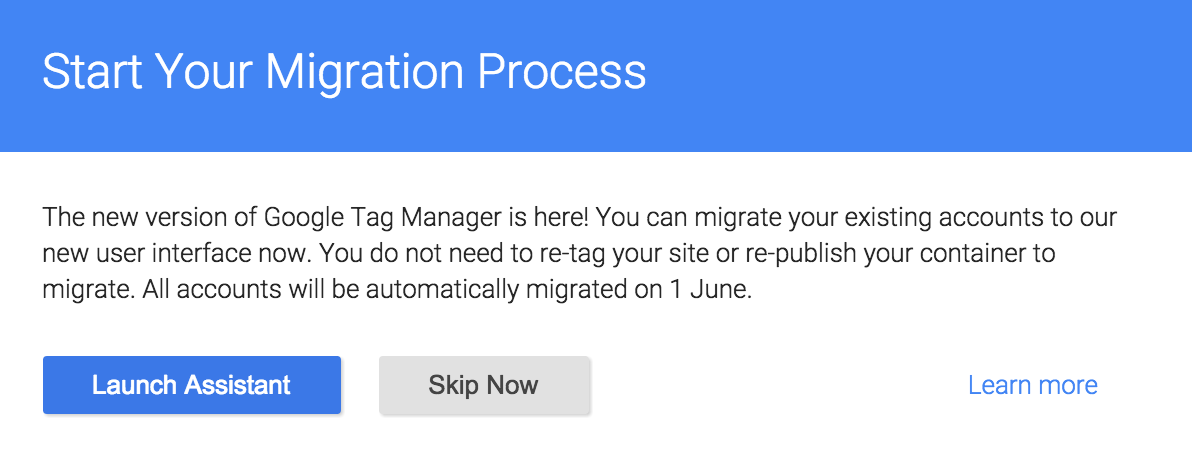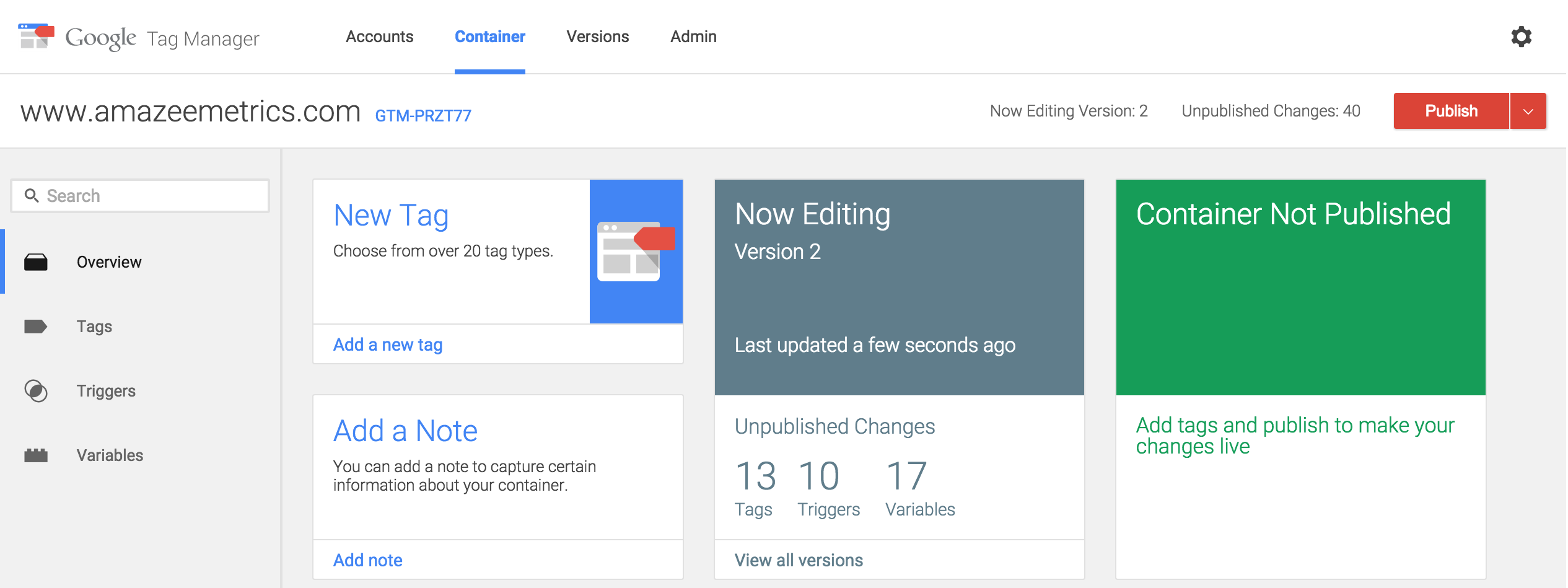All Google Tag Manager accounts will be upgraded automatically to Version 2 after June 1, 2015. If you are a Google Tag Manager user, it is time to start thinking about how you will manage this change. You can chose to do nothing and your account will be automatically upgraded, or you can migrate now. Either way, you should be prepared to make some changes to optimize your Google Tag Manager Version 2 account.
Migration Assistant
If you want to upgrade now, the process is now relatively simple, thanks to the Migration Assistant.

With the click of a few buttons, your Google Tag Manager account will be queued for migration. The actual migration takes a few hours. When it is complete, you will see your accounts in the new version 2 interface and will be able to use the new upgraded features of Google Tag Manager 2.

If you do nothing, your Google Tag Manager account will be automatically upgraded sometime after June 1, 2015.
After Upgrading to Google Tag Manager Version 2
Whether you decide to migrate your account now with the Migration Assistant or wait until it is done automatically, you should make sure you check your account post-migration. Here is our list of recommended tasks:
1. Preview and Debug
The first thing you should do after upgrading to version 2 is debug. Use Google Tag Manager’s built-in Preview feature to check that all the tags on your site are still firing correctly. It is unlikely that you will find a problem, but you should always test after major changes.
2. Reconfigure Event Tracking Tags
Your old auto-event tracking tags from version 1 should still work in version 2, but they will include a lot of pieces that are no longer necessary. These include:
- Custom triggers (imported from your version 1 “Firing Rules”): switch to using new auto-event triggers. See this detailed explanation of how auto-event tracking works in GTM v2 by Google Tag Manager guru Simo Ahava.
- User-Defined Variables (imported from your version 1 “Macros”): switch to using new Built-In Variables. See Simo Ahava’s guide to GTM v2 variables.
Remember to remove the custom triggers and user-defined variables that you no longer need after making the switch. By converting these tags to use the new version 2 features, you’ll reduce the amount of code that your Google Tag Manager container has to load. Optimizing your Javascript is always a good thing.
3. Delete Listener Tags
In Google Tag Manager version 1, you had to create event listener tags that would “listen” for clicks or form submissions, or for whatever event you were tracking on your site. One of the major changes in Version 2 is that event listeners are built into the auto-event tracking triggers, so these listeners are no longer necessary. The next step after reconfiguring your event tracking tags should be removing these listener tags.
4. Preview and Debug
Again. If you made the suggested changes to your event tracking tags, remember to thoroughly check that everything is still working as expected.
More Resources:
Simo Ahava’s tips on Migration to V2 Using the Migration Assistant
Brian Kuhn’s answers to Google Tag Manager Migration questions









